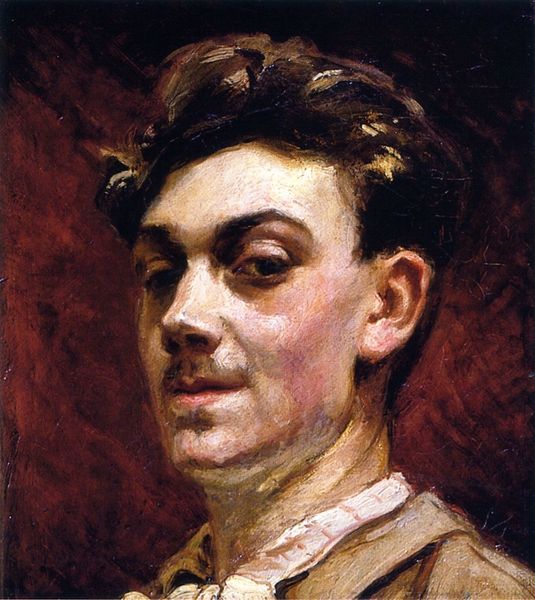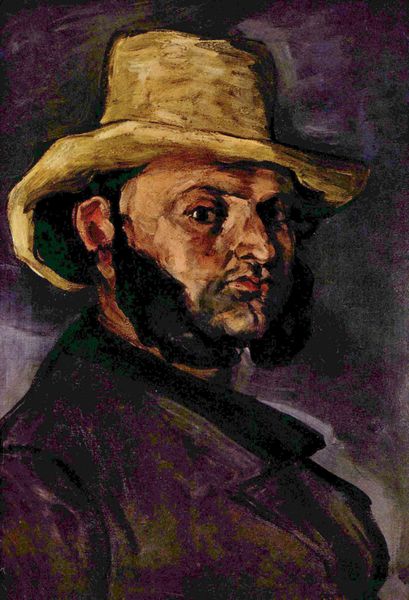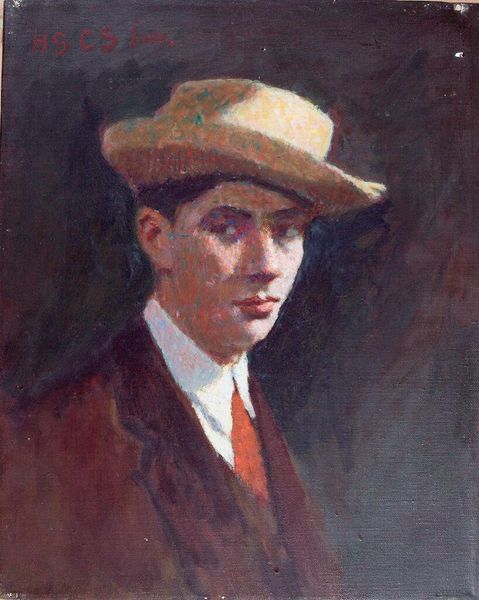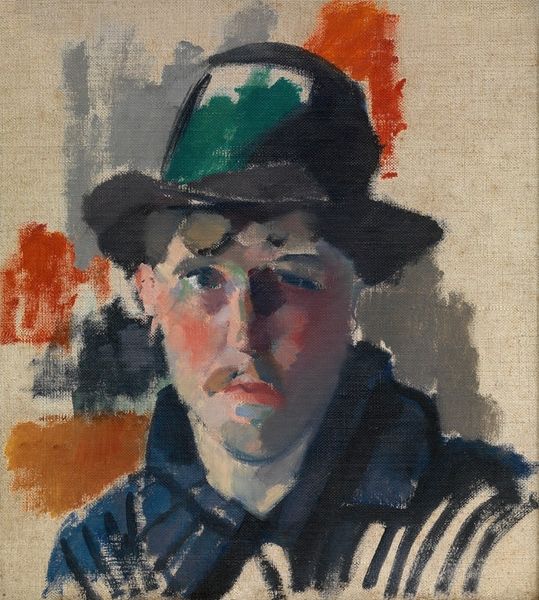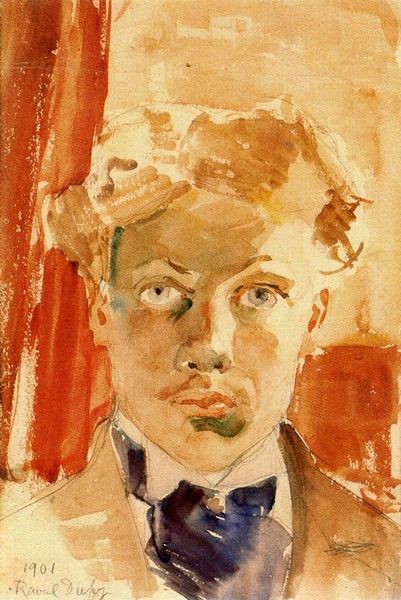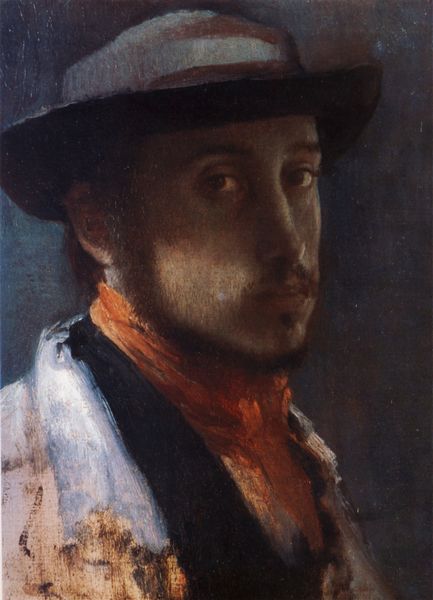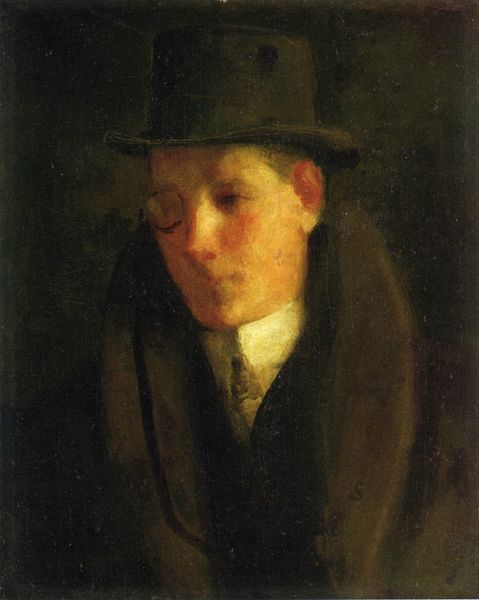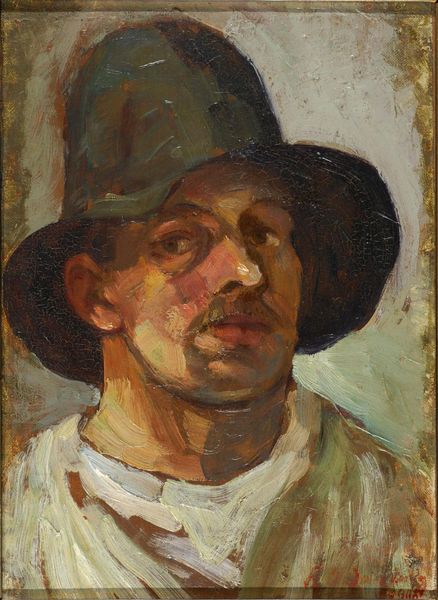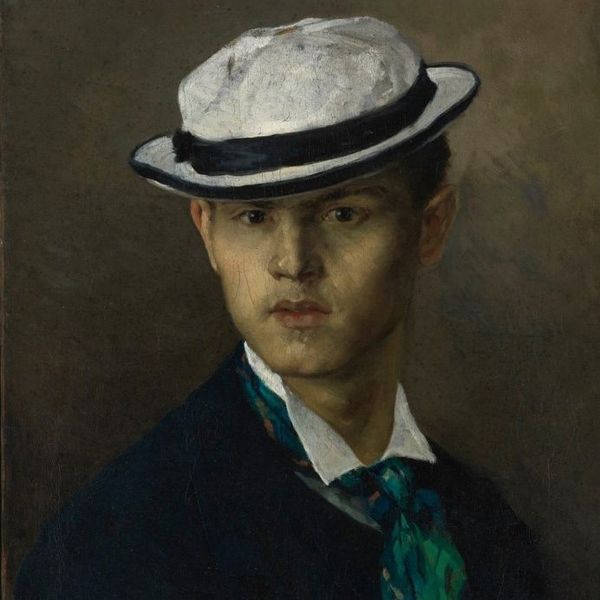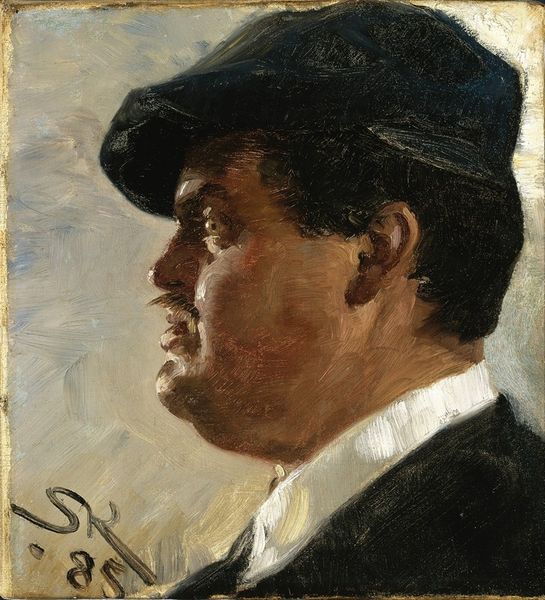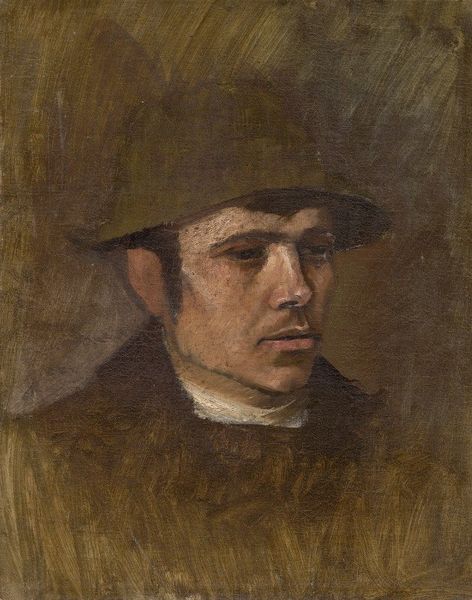
Dimensions: 33.7 x 41 cm
Copyright: Public domain US
Editor: Here we have Raoul Dufy’s “Self-Portrait” from 1899, rendered in oil paint. It has such a brooding atmosphere about it. Dufy’s choice of dark tones gives it a certain solemnity. What is your take on this painting? Curator: It’s fascinating to consider this work within the context of late 19th-century art education. The Impressionist style was gaining traction, challenging academic norms. Notice the visible brushstrokes, a hallmark of Impressionism, but Dufy retains a formality in the subject’s pose and attire. Editor: So, it’s like a bridge between traditional portraiture and the emerging avant-garde? Curator: Precisely! Think about the role of the Salon system at the time. Artists like Dufy were navigating a complex world where acceptance by the established art institutions was crucial for a career. How might this tension have influenced his artistic choices in this self-portrait? Editor: Perhaps he’s trying to demonstrate his technical skills while also hinting at his interest in new artistic approaches, trying to play to both camps? Curator: Exactly. This portrait becomes an interesting statement about the artist's position within the artistic landscape of his time, reflecting ambition and perhaps even a subtle critique of the prevailing artistic norms. Do you think that early understanding of the establishment benefitted his career long term? Editor: Absolutely! I hadn’t considered the push and pull of institutions on artists' choices. Thanks for highlighting that tension. Curator: My pleasure. Seeing art as a product of its social and institutional context offers invaluable insight, don't you think?
Comments
No comments
Be the first to comment and join the conversation on the ultimate creative platform.

